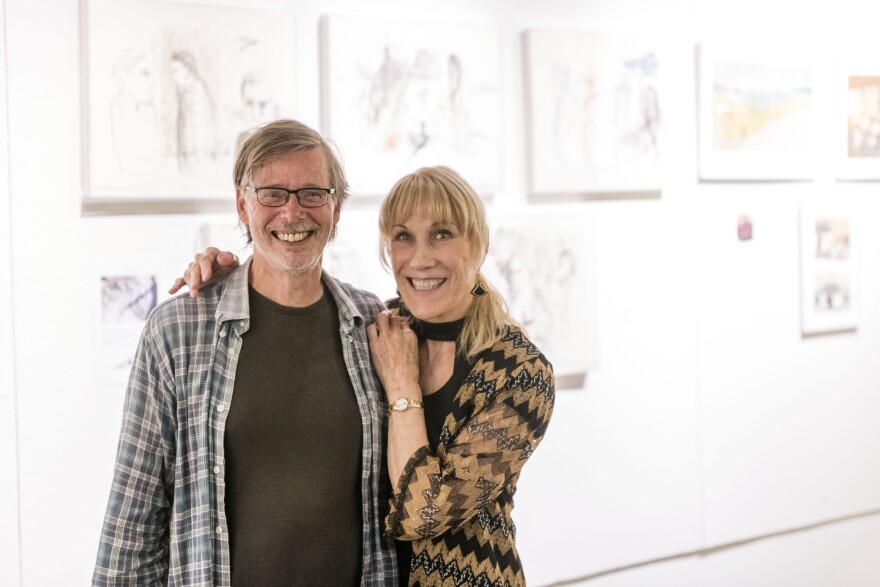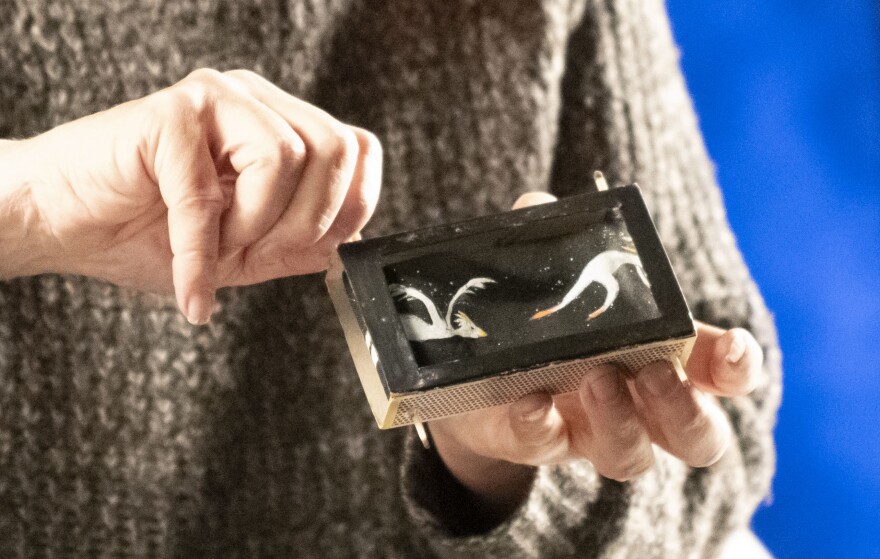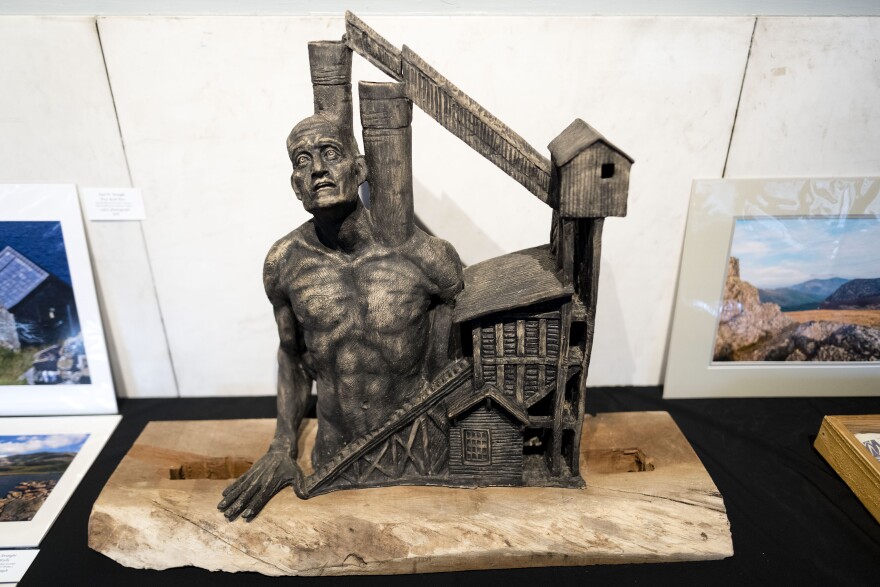Across the Atlantic Ocean -- 3,586 miles away from West Virginia -- you will find Wales, which is part of the United Kingdom. The western side of Wales is lined by two channels from the Celtic Sea. And inland is quite mountainous. Within those mountain towns, you will find similar folk culture to Appalachia.
“The nature of the people and the landscape is very similar. Plus, many people from West Wales came over here. So we’ve got those really strong connections,” said Peter Stevenson, a Welsh artist, writer and storyteller.
These strong connections inspired Peter to host an art exhibit at the Monongalia Arts Center in Morgantown, an expansive art exhibit dedicated to the Wales-Appalachia connection.
History
Many of Appalachian’s ancestors migrated from Wales to Appalachia. There are other strong historical connections between the two regions. For example, both have a long and complicated history with the coal industry, and both have a strong mountain culture – a culture that includes music, art and storytelling.

Peter has family who immigrated to West Virginia in the 1960s. So, Peter has listened to many Appalachian folktales, and he has found many similarities to Welsh folklore. Similar characters appear in both traditions, like fairies or little people and granny women - older, eccentric women who either create charm or mischief.

But the stories differ slightly. Peter thinks the Welsh brought over their folklore when they immigrated to Appalachia hundreds of years ago, but the stories changed slightly over time to become more Appalachian.
“Within these stories which appear to be the same they take on something from the landscape and nature of the people in that landscape and they’re subtly different,” he said.
The Exhibit

Peter organized the art exhibit on display in Morgantown to further explore the connections.
The exhibit is one big story that contains many little stories, it is a bit like a fairytale book come to life at the Monongalia Arts Center, featuring Welsh and Appalachian artists.
There are dolls made to look like witches with a black triangle hat, drawings of mermaids in the Monongahela river and a woman who turned into a swan. There are a lot of bright colors and characters that make one’s imagination run wild.
Peter is a professional storyteller. When he tells a story, one feels spellbound. He tells the crowd a folk story using a cranky – a storytelling device likely familiar to Appalachians.
A cranky is like a picture book except with drawings all on one long scroll. It is contained within a frame with two handles that move the scroll, and it is typically accompanied by a story.
The Story of Beti Grwca
The story Peter told at the exhibit opening is about an old granny woman named Beti Grwca who lived on the west coast of Wales. She often would gaze out her window toward America.
“Thousand wrinkles around the eyes, a single yellow tooth wobbling unnervingly in the breeze from her breath and a single gray hair in the middle of her chin,” Peter said.
Peter turned the cranky as he spoke. The pictures are drawn in a heavy black ink. Beti looks like a kind, but mischievous old woman out of a children’s book.
Peter explained that Beti could make love potions. She would make them for all the town folk. But sometimes she mixed them up, and in Peter’s story, much to the town’s dismay, Beti accidentally made a farm woman and a man of nobility fall in love. But they ended up living happily ever after and having dozens of babies.

Peter turned to the final image on the cranky, and revealed a picture of Beti with a sly smirk pointing to her love potion bottle and a trail of red hearts.
“Old Beti is still there. She’s still there in her little cottage. She’s got even more wrinkles around her eyes, her solitary yellow tooth fell out years ago, but her little gray hair is still there and she twirls it and looks out across the water to America,” Peter said. “And thinks to herself, maybe my love potions would work in West Virginia.”
West Virginian Art
The first floor of the exhibit features the Welsh artists and their interpretation of folktales. The second floor is dedicated to West Virginian artists, such as, Eddie Spaghetti.
He is based in Morgantown and works in many art mediums, including crankies. One of Eddie’s crankies on display is titled ‘Light in the Darkness.’ It is accompanied by a poem that Eddie wrote in tiny print underneath the drawings.
“I put a magnifying glass onto it, that magnifying glass is a real attention-getter - you can’t help but to look at stuff,” he says.
Another of the West Virginian artists featured in the exhibit is accomplished sculptor Jamie Lester. Some of his well-known work includes the Don Knotts and Jerry West statues in Morgantown.

Jamie’s piece on display in the Wales-Appalachia gallery reflects man’s connection to coal. Something that is a big part of Appalachian and Welsh history. It's a sculpture of a man’s body merged with a coal operation, and the coal tipple is connected to his head and shoulder.
“He’s being like fed coal, he is coal, coal is in his blood, he’s being force-fed coal,” Jamie said. “And his arms are tied behind is his back and one of his arms is breaking the structure of the tipple, so you get the feeling he’s being tormented, but there’s the possibility of him breaking away from his tormentor.”
This sculpture and all the many other pieces from Appalachia and Wales are on display at the Monongalia Arts Center in Morgantown. The exhibit will be up through the end of this month, when it will travel to Wales for display.













